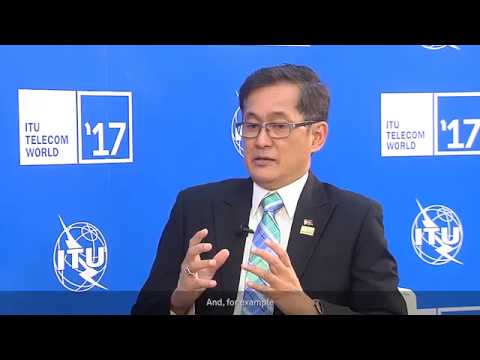
Unlocking Somalia’s Digital Future: In-Depth Analysis of Internet Growth, Obstacles, and Emerging Opportunities
- Market Overview
- Technology Trends Shaping Connectivity
- Competitive Landscape and Key Players
- Growth Forecasts and Projections
- Regional Analysis of Internet Access
- Future Outlook for Somalia’s Connectivity
- Challenges and Opportunities Ahead
- Sources & References
Market Overview
Somalia’s internet access landscape has undergone significant transformation over the past decade, marked by rapid growth, persistent challenges, and promising prospects for future connectivity. As of 2023, internet penetration in Somalia reached approximately 14% of the population, up from just 2% in 2012, according to DataReportal. This growth is largely attributed to the expansion of mobile broadband services and the entry of international submarine cables, such as the EASSy cable, which landed in Mogadishu in 2013 and dramatically improved bandwidth and reduced costs.
Mobile internet is the primary mode of access, with over 90% of internet users connecting via smartphones. Major telecom operators like Hormuud Telecom, Somtel, and Golis have played a pivotal role in expanding 3G and 4G coverage, especially in urban centers such as Mogadishu, Hargeisa, and Bosaso (BuddeComm). However, rural and remote regions still face significant connectivity gaps due to infrastructure deficits, security concerns, and high deployment costs.
Despite these advances, Somalia’s internet ecosystem faces several challenges:
- Infrastructure Gaps: Many rural areas lack reliable electricity and network infrastructure, limiting expansion beyond major cities.
- Security and Political Instability: Ongoing conflict and insecurity hinder investment and maintenance of telecom infrastructure (World Bank).
- Regulatory Environment: The sector has historically been fragmented, but the 2017 National Communications Act and the establishment of the National Communications Authority (NCA) have begun to standardize licensing and spectrum management (NCA Somalia).
- Affordability: While prices have dropped, the cost of data remains high relative to average incomes, limiting widespread adoption.
Looking ahead, Somalia’s connectivity future is promising. The government’s digital transformation agenda, increased investment in fiber-optic networks, and the proliferation of mobile money services are expected to drive further growth. The World Bank’s Digital Somalia initiative aims to expand digital infrastructure and skills, targeting 30% internet penetration by 2026 (World Bank Digital Somalia). If these efforts succeed, Somalia could see a new era of digital inclusion, economic development, and social connectivity.
Technology Trends Shaping Connectivity
Somalia’s internet landscape has undergone significant transformation over the past decade, driven by both private sector innovation and gradual improvements in infrastructure. As of 2023, internet penetration in Somalia reached approximately 14% of the population, up from just 2% in 2012 (DataReportal). This growth is largely attributed to the expansion of mobile broadband services, with mobile operators such as Hormuud Telecom and Somtel playing pivotal roles in connecting urban and rural communities.
Despite this progress, Somalia faces persistent challenges in achieving widespread, reliable internet access. The country’s protracted conflict and political instability have hindered the development of robust telecommunications infrastructure, particularly in remote and rural areas. According to the World Bank, only about 30% of the population has access to electricity, a critical prerequisite for digital connectivity. Additionally, high costs of international bandwidth and limited terrestrial fiber networks contribute to elevated internet prices, making access unaffordable for many Somalis.
Regulatory uncertainty has also been a barrier. Until the passage of the National Communications Act in 2017, Somalia lacked a unified legal framework for the telecommunications sector. The establishment of the National Communications Authority (NCA) has since provided a foundation for sector regulation, spectrum management, and consumer protection (NCA Somalia).
Looking ahead, several trends are poised to shape the future of connectivity in Somalia:
- Submarine Cable Expansion: The landing of the Djibouti Africa Regional Express (DARE) submarine cable in Mogadishu in 2022 has increased international bandwidth, promising faster and more affordable internet.
- Mobile-First Growth: With over 90% of internet users accessing the web via mobile devices, mobile broadband will remain the primary driver of digital inclusion (GSMA).
- Digital Services Expansion: The rise of mobile money platforms and e-government initiatives is increasing demand for reliable connectivity, further incentivizing investment in network infrastructure.
- Satellite Internet: Emerging satellite internet providers, such as Starlink, are exploring entry into the Somali market, which could help bridge the digital divide in underserved regions.
In summary, while Somalia’s internet sector faces notable hurdles, ongoing investments in infrastructure, regulatory reforms, and technological innovation are setting the stage for broader, more inclusive connectivity in the years ahead.
Competitive Landscape and Key Players
The competitive landscape of internet access in Somalia has evolved rapidly over the past decade, driven by both local innovation and international investment. The country’s telecommunications sector is one of the most dynamic in Africa, despite ongoing challenges related to infrastructure, regulation, and security.
Key Players
- Hormuud Telecom: As the largest telecom operator in Somalia, Hormuud provides mobile, internet, and mobile money services to millions. The company has played a pivotal role in expanding 4G coverage, especially in urban centers like Mogadishu.
- Somtel: A major competitor, Somtel offers broadband, mobile, and enterprise solutions. It has invested in fiber-optic infrastructure and international connectivity, notably through submarine cable partnerships.
- Golis Telecom: Predominantly serving Puntland, Golis is a key regional player, providing internet and mobile services and contributing to the digital inclusion of northern Somalia.
- Telesom: Based in Somaliland, Telesom is a market leader in the region, offering 4G and fiber-optic services and pioneering mobile money platforms.
Growth and Market Trends
Internet penetration in Somalia has seen significant growth, rising from less than 2% in 2012 to approximately 14% in 2023 (DataReportal). The expansion is fueled by mobile broadband, with 4G networks now available in most major cities. The arrival of the EASSy submarine cable in 2014 was a turning point, slashing costs and improving speeds.
Challenges
- Infrastructure Gaps: Rural and remote areas remain underserved due to high deployment costs and security risks.
- Regulatory Environment: The sector is fragmented, with limited government oversight, though the National Communications Act (2017) aims to unify regulation.
- Security Concerns: Ongoing conflict and instability hinder infrastructure investment and maintenance.
The Future of Connectivity
Looking ahead, Somalia’s internet market is poised for further growth as operators invest in fiber-optic networks and 5G trials. International partnerships and donor support are expected to accelerate rural connectivity and digital literacy, positioning Somalia as a potential tech hub in the Horn of Africa.
Growth Forecasts and Projections
Somalia’s internet access landscape has experienced notable growth over the past decade, driven by increased mobile penetration, investment in infrastructure, and regulatory reforms. According to the Digital 2024: Somalia report, as of January 2024, there were approximately 3.15 million internet users in Somalia, representing an internet penetration rate of 18.2%. This marks a significant increase from just 2.5 million users in 2022, reflecting an annual growth rate of over 25%.
Mobile connectivity remains the primary driver of internet access. The GSMA Mobile Economy Sub-Saharan Africa 2023 report highlights that mobile broadband coverage in Somalia reached 85% of the population in 2023, with 4G services expanding rapidly in urban centers. The number of mobile connections stood at 8.6 million in early 2024, indicating that mobile devices are the main gateway to the internet for most Somalis.
Despite this progress, several challenges persist. Infrastructure gaps, especially in rural and conflict-affected regions, limit access and quality of service. The World Bank notes that only 30% of rural households have reliable internet access, compared to 60% in urban areas (World Bank Somalia Economic Update). High costs, limited digital literacy, and intermittent power supply further hinder widespread adoption.
Looking ahead, the future of connectivity in Somalia appears promising. The government’s National ICT Policy and Strategy aims to achieve 50% internet penetration by 2030, focusing on expanding fiber-optic networks, fostering competition among service providers, and promoting digital skills training (Somalia National ICT Policy). International partnerships, such as the World Bank’s Digital Somalia initiative, are expected to inject over $100 million into digital infrastructure and capacity-building projects over the next five years.
- Internet penetration projected to reach 30% by 2026, driven by mobile broadband expansion.
- Urban-rural digital divide remains a key challenge, with targeted investments planned.
- Regulatory reforms and public-private partnerships are expected to accelerate growth and improve affordability.
In summary, while Somalia faces significant hurdles, the trajectory for internet access is upward, with robust growth forecasts and strategic initiatives paving the way for a more connected future.
Regional Analysis of Internet Access
Internet Access in Somalia: Growth, Challenges, and the Future of Connectivity
Somalia’s internet landscape has undergone significant transformation over the past decade, marked by both rapid growth and persistent challenges. As of 2023, internet penetration in Somalia reached approximately 13% of the population, a notable increase from less than 2% in 2012 (DataReportal). This growth is largely attributed to the expansion of mobile broadband services, with mobile operators such as Hormuud Telecom and Somtel playing pivotal roles in extending coverage to urban and some rural areas.
Despite this progress, Somalia’s internet access remains among the lowest in the region. The country faces several challenges:
- Infrastructure Deficits: Decades of conflict have left much of Somalia’s telecommunications infrastructure underdeveloped. Fixed broadband is virtually nonexistent, and most connectivity relies on mobile networks (Brookings).
- Security Concerns: Ongoing insecurity, particularly in rural and conflict-prone areas, hampers the deployment and maintenance of network infrastructure.
- Regulatory Environment: The regulatory framework is still evolving. The National Communications Authority (NCA) was only established in 2017, and efforts to standardize licensing and spectrum allocation are ongoing (NCA Somalia).
- Affordability: While mobile data prices have decreased, they remain high relative to average incomes. According to the Alliance for Affordable Internet, 1GB of mobile data costs about 7% of average monthly income, above the UN’s 2% affordability target (A4AI).
Looking ahead, Somalia’s connectivity prospects are promising. The arrival of undersea fiber optic cables, such as the DARE1 cable in 2021, has improved international bandwidth and reduced latency (Capacity Media). The government’s National ICT Policy aims to further expand access, promote digital literacy, and foster a competitive telecom sector. If security and regulatory reforms continue, Somalia could see internet penetration rates double by 2030, unlocking new opportunities for economic growth, education, and social inclusion.
Future Outlook for Somalia’s Connectivity
Somalia’s internet landscape has experienced significant growth over the past decade, driven by private sector investment and increasing demand for digital services. As of 2023, internet penetration in Somalia reached approximately 14% of the population, up from less than 2% in 2012 (DataReportal). This growth is largely attributed to the expansion of mobile broadband, with major telecom operators such as Hormuud Telecom and Somtel providing 3G and 4G services in urban centers and some rural areas.
Despite these advances, Somalia faces persistent challenges in expanding internet access. Infrastructure remains underdeveloped, particularly in rural and conflict-affected regions, where the cost of deploying fiber-optic cables and mobile towers is high. The country’s ongoing security concerns and political instability further complicate large-scale infrastructure projects (World Bank).
Affordability is another major barrier. While the cost of mobile data has decreased in recent years, it still represents a significant portion of average income for many Somalis. According to the Alliance for Affordable Internet, the price of 1GB of mobile data in Somalia is about 4.5% of monthly income, above the UN’s recommended threshold of 2% (A4AI).
Looking ahead, several initiatives offer hope for improved connectivity:
- Submarine Cable Projects: The landing of the DARE1 submarine cable in Mogadishu in 2021 has already enhanced international bandwidth and reduced latency, with further expansion planned (Capacity Media).
- Regulatory Reforms: The government’s adoption of the National Communications Act in 2017 and the establishment of the National Communications Authority have created a more enabling environment for investment and competition (NCA Somalia).
- Digital Literacy and Inclusion: NGOs and international partners are investing in digital skills training and community internet centers to bridge the digital divide, especially for women and youth (ITU).
In summary, while Somalia’s internet access is poised for continued growth, realizing its full potential will require addressing infrastructure gaps, affordability, and digital literacy. With sustained investment and policy support, Somalia could see a transformative leap in connectivity over the next decade.
Challenges and Opportunities Ahead
Somalia’s internet landscape has experienced notable growth in recent years, driven by increased mobile penetration and the expansion of fiber-optic infrastructure. As of 2023, internet penetration in Somalia reached approximately 14% of the population, up from just 2% a decade ago (DataReportal). This growth is largely attributed to the proliferation of affordable mobile broadband services, with major telecom operators such as Hormuud Telecom and Somtel leading the charge in urban and semi-urban areas.
Despite these advances, significant challenges persist:
- Infrastructure Gaps: Rural and remote regions remain underserved due to limited infrastructure investment and security concerns. The lack of reliable electricity and the threat of conflict hinder the rollout of new networks (Brookings).
- Affordability: While mobile data prices have decreased, they still represent a substantial portion of average incomes. According to the Alliance for Affordable Internet, the cost of 1GB of mobile data in Somalia is about 6% of monthly income, above the UN’s 2% affordability target (A4AI).
- Regulatory Environment: The absence of a unified regulatory framework has led to fragmented service provision and limited consumer protection. The National Communications Authority, established in 2017, is working to address these issues, but progress is gradual (NCA Somalia).
- Digital Literacy: Low levels of digital literacy, especially among women and rural populations, restrict the effective use of internet services and limit the potential for digital inclusion (UNICEF Somalia).
Looking ahead, several opportunities could accelerate Somalia’s digital transformation:
- Submarine Cable Connectivity: The arrival of new submarine cables, such as the DARE1 system, promises to boost bandwidth and reduce costs, making high-speed internet more accessible (Capacity Media).
- Mobile-First Innovation: With over 90% of internet users accessing the web via mobile devices, there is significant potential for mobile-based services in education, health, and finance (GSMA).
- International Partnerships: Collaborations with international organizations and donors are supporting digital skills training and infrastructure development, aiming to bridge the digital divide and foster inclusive growth (World Bank).
In summary, while Somalia faces considerable obstacles in expanding internet access, ongoing investments and policy reforms present a pathway toward a more connected and digitally empowered future.
Sources & References
- Internet Access in Somalia: Growth, Challenges, and the Future of Connectivity
- World Bank
- World Bank Digital Somalia
- Djibouti Africa Regional Express (DARE) submarine cable
- Hormuud Telecom
- Telesom
- EASSy submarine cable
- ITU
- Somalia National ICT Policy
- Brookings
- A4AI
- Capacity Media
This post Somalia’s Digital Transformation: Exploring Internet Expansion, Barriers, and Connectivity Prospects appeared first on Macho Levante.

A cybersecurity specialist with a passion for blockchain technology, Irene L. Rodriguez focuses on the intersection of privacy, security, and decentralized networks. Her writing empowers readers to navigate the crypto world safely, covering everything from wallet security to protocol vulnerabilities. Irene also consults for several blockchain security firms.








